Scheduling a bulk update for a collection can be useful when a group of objects needs to be updated on a regular basis. A scheduled bulk update on a collection can reduce the amount of time required to make those same updates manually. For example, if products incoming from a specific supplier feature a measurement with 'millimeters' spelled out, but the internal standard requires only 'mm' to be used, scheduling a bulk update to make that change periodically can be an effective data management tool.
Important: Consider the time zone of the application server compared to that of the workbench (the client) where the schedule is created or viewed. When scheduling a job, the local time zone is displayed in the workbench, but the time zone of the server is used to run the background process. Once the process has been scheduled, the Schedule field will always show the server time zone regardless of which time zone the user who scheduled the process is in. And, the Next Run field will show the local time zone.
For information on how to schedule bulk updates for collections in Web UI, refer to the Scheduling a Collection Refresh in Web UI topic.
Prerequisites
The following tasks must be completed before a collection is scheduled to run a bulk update.
-
Create a collection. More on creating a collection can be found in the Creating Collections topic in the Getting Started documentation.
-
Create a bulk update configuration. Refer to Creating a Bulk Update topic for more on how to configure a bulk update.
Scheduling Bulk Updates
To perform a bulk update on a collection at regular intervals, create a schedule that applies to a particular collection. The bulk update is then automatically run at the scheduled time.
-
From the File menu, select Bulk Updates and Schedule Bulk Update to open the Schedule Bulk Update wizard.
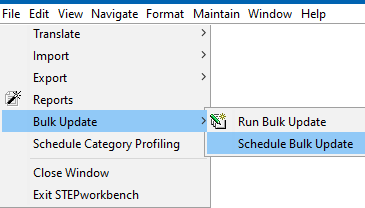
-
On Setup, for the Collection parameter, click the selector button (
 ) to locate and select the relevant collection. This option is not valid if the collection is created from the Run Bulk Update option.
) to locate and select the relevant collection. This option is not valid if the collection is created from the Run Bulk Update option.-
For the Refresh before each run (Search Collections only) parameter, if the collection selected was created using the search criteria, check this option to refresh the collection based on the current data using search criteria, before executing the bulk update operation(s).
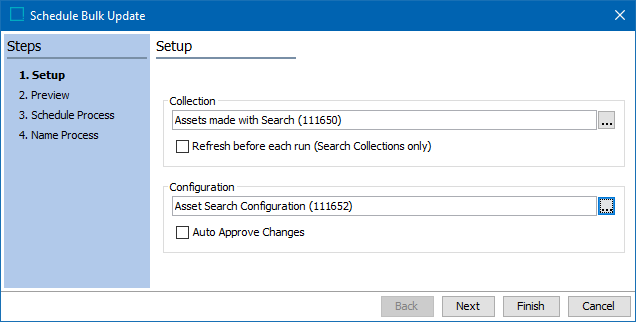
-
-
For the Configuration parameter, click the selector button (
 ) to locate and select the relevant configuration.
) to locate and select the relevant configuration. -
For the Auto approve changes parameter, check this option to place the updated objects in the approved workspace immediately after the update.
-
-
Click Next to display the Preview and review the example results of the update.
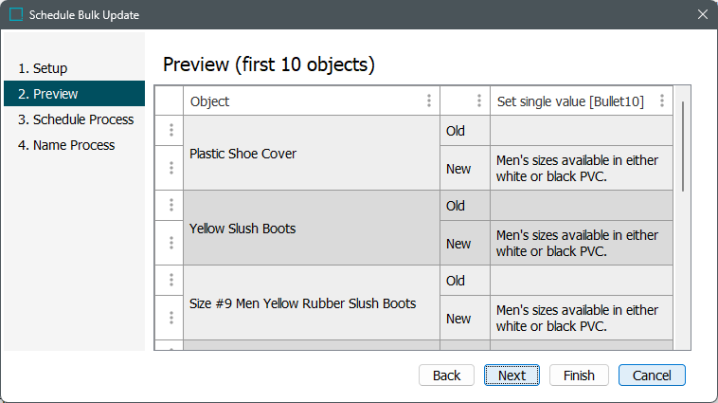
-
Click Next to display Schedule Process and create the time schedule by selecting either Now, Later, Weekly, Monthly, or Later and repeat. Complete the options related to the schedule.
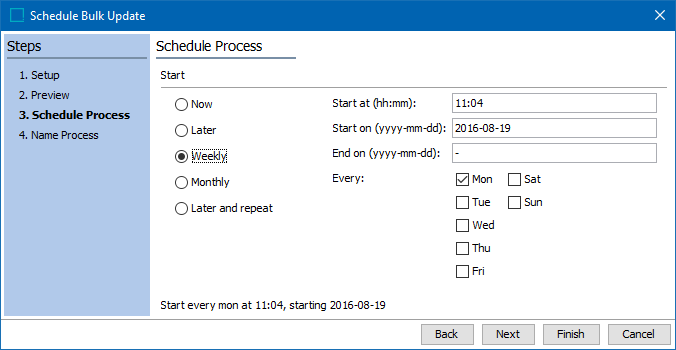
-
Click Next to display Name Process and enter a name for the Schedule Process Name parameter. The Process Name parameter displays the name displayed in the Background Processes tab.
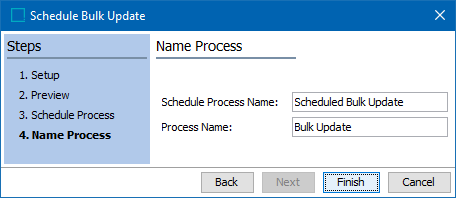
-
Click Finish to complete the wizard.
-
On the Background Processes dialog choose an option:
-
Click Go to process to display the background process.
-
Click Close to display the workbench while the background process runs.
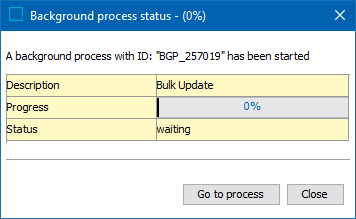
-
The following information is available on the BG Processes tab:
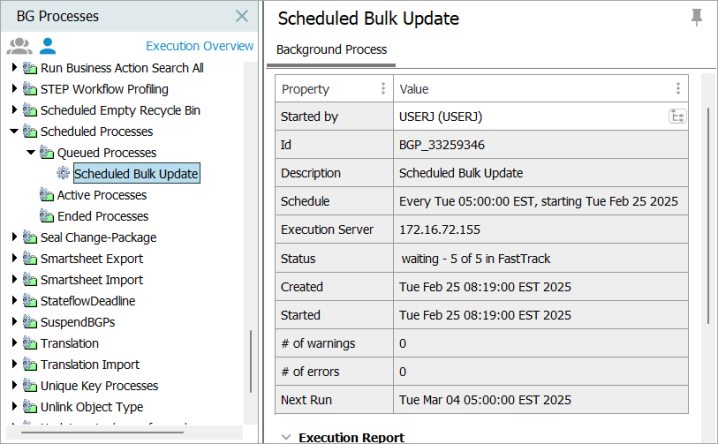
-
On the left side of the image above, under the Scheduled Processes node, a bulk update that is scheduled to run at a later time is displayed under the 'Queued processes' node.
-
On the right side of the image above, in the Properties section, the schedule is displayed and the process shows a Status of 'waiting.'
-
On the BG Processes tab, the Properties section includes the 'Started by' parameter which reflects the user who created the scheduled background process. To change the user for a scheduled or queued BGP, add the 'Manage Background Process Execution' Setup Action privilege to the relevant user group. This privilege enables a selector button on the 'Started by' parameter.
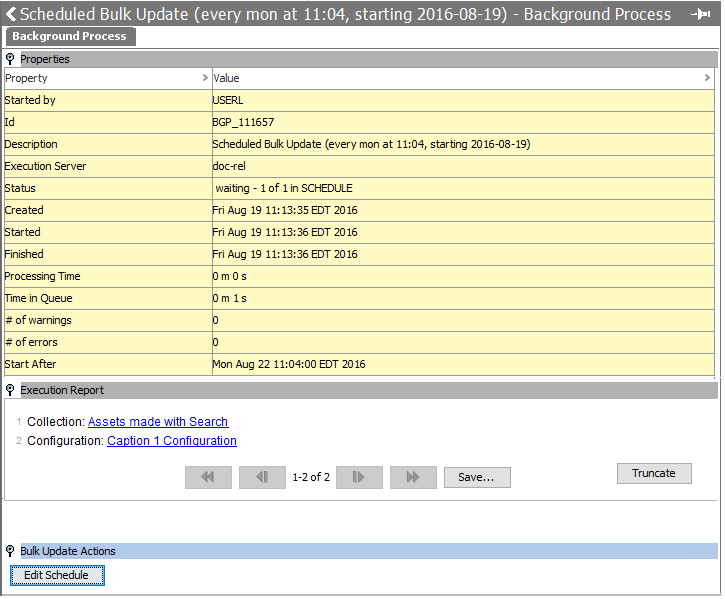
-
The Execution Report records the progress of the background process.
-
The Bulk Update Actions section allows users to make an adjustment to the scheduled bulk update. Click the 'Edit Schedule' button to reopen the 'Schedule Bulk Update' wizard on the 'Schedule Process' step. Users can then amend the schedule as needed, and the changes will be applied to the bulk update.
For details on the states of a background process, Refer to the BGP States and Quarantine Status topic in the System Setup documentation.